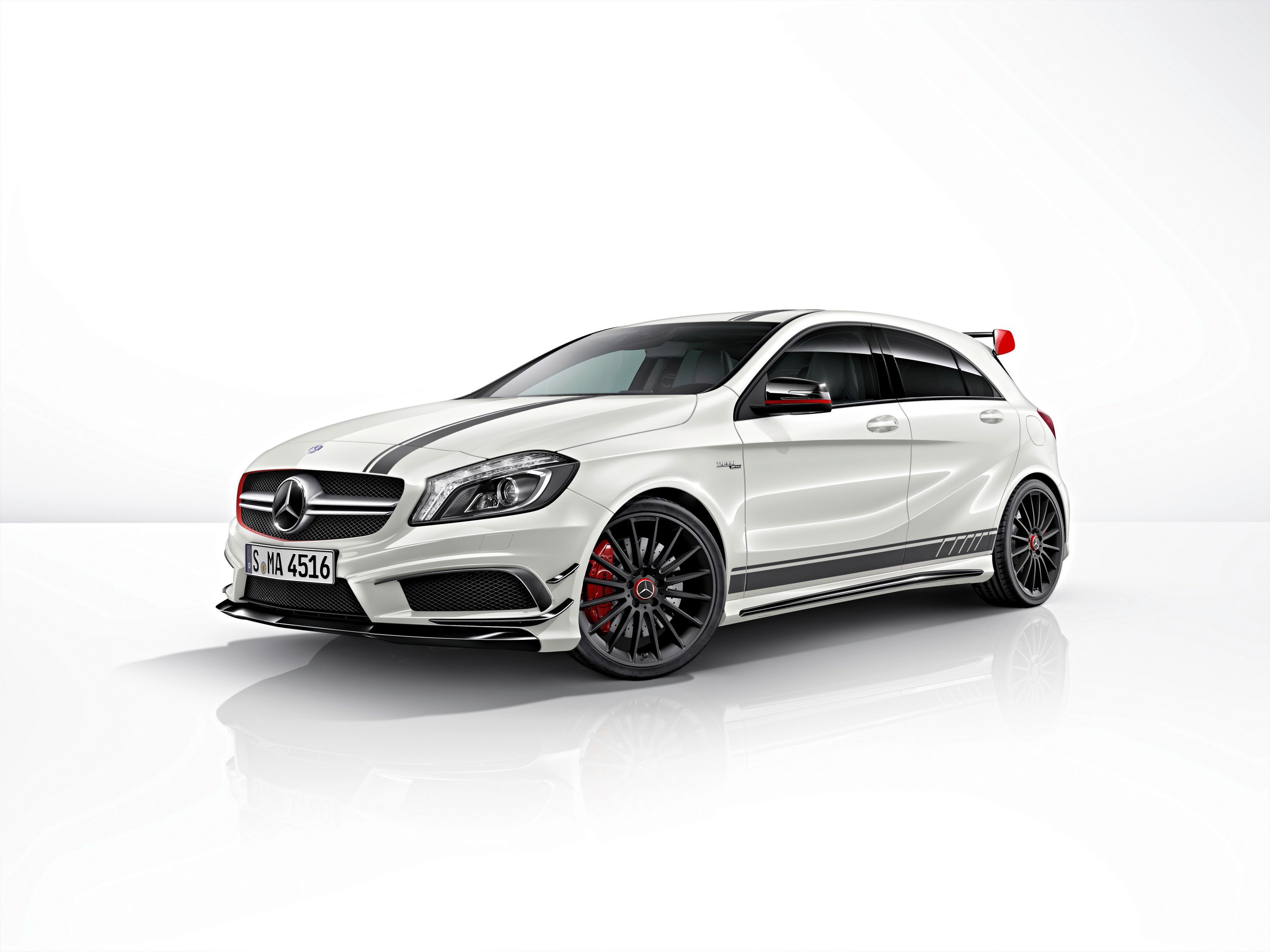From Moose Tests to Speed Demons: The Evolution of Mercedes Hot Hatches

by AutoExpert | 19 November, 2024
Back in the late 90s, Mercedes-Benz and McLaren were the dream team of Formula 1, bagging championships with their beastly 3.0-liter V10 engines. But Mercedes wasn’t just about speed on the track; they had bigger ambitions, like proving they could sprinkle a little of that racing magic onto their most unassuming road car—the A-Class.
Transforming the A-Class
Lаunched in 1997, the A-Class wаs Mercedes dipping its toes into the bustling city cаr market. This little car was packed with big ideas, especially safety innovations like an engine designed to slide under the car in a crash instead of crashing into the passengers. Smart, right? But there was a hiccup—the car’s high center of gravity meant it flunked the moose test by tipping over during sharp turns. Mercedes quickly tweaked the stability control and suspension to fix that embarrassing slip-up.

Keen to shake off the bad press and flex their engineering muscles, Mercedes decided to create a souped-up version of the A-Class.
The A38 AMG: A Double-Engine Dare
Imagine this: instead of just tweaking the existing engine for more power, Mercedes’ AMG team decided to go wild and cram a second engine into the A-Class. Yes, two engines in one compact car. This wasn’t just a power boost—it was a statement.

Here’s what the A38 AMG was packing:
- Engines: Two 1.9-liter inline-4s
- Total Power: 250 horsepower
- Torque: 266 lb-ft
- 0-60 mph: Zippy at 5.9 seconds
- Top Speed: 143 mph
With all-wheel drive capability when both engines were firing, this car was a rocket. It had sports suspension, big brakes from a high-end sports sedan, and looked every bit the hot hatch with 17-inch AMG wheels and aggressive styling.
Despite its prowess, the A38 AMG remained a prototype. The cost of two engines would’ve made it as expensive as some of the luxury models, so Mercedes decided it was a no-go for production.

From Prototype to Production: The A-Class Evolves
Mercedes didn’t stop dreaming up high-performance A-Classes, though. They followed up with the A32 AMG—a one-off beast with a supercharged engine upfront driving the rear wheels, boasting 370 horsepower. It was a thrilling ride but a bit too wild for regular driving.
Meanwhile, for those who wanted a sporty but practical option, Mercedes rolled out the A210 Evolution. It wasn’t a full AMG model, but with 140 horsepower and a sportier setup, it added a bit of spice to the daily commute.

The A45 AMG: Hitting the Hot Hatch Jackpot
It took until 2014, but Mercedes finally cracked the hot hatch formula with the A45 AMG. This beast had the most powerful four-cylinder engine on the market at the time—381 horsepower from a turbocharged 2.0-liter engine. It was quick, stylish, and packed with all the AMG trimmings, making it a star in the hot hatch scene.
The A45 AMG nailed the blend of everyday usability and thrilling performance, proving that Mercedes could indeed transfer its racing pedigree to a compact car. It wasn’t just fast; it was a statement on wheels—screaming that Mercedes could do fun as well as they did luxury and safety.

The Legacy of Mercedes’ Hot Hatches
The A38 AMG might have been too bold for its time, but it set the stage for Mercedes’ ventures into high-performance compact cars. The A45 AMG wouldn’t exist without the wild experiments of its predecessor. Mercedes’ journey from F1 tracks to city streets shows they’re not afraid to push boundaries and rethink what their cars can do.

Whether it’s winning championships or redefining hot hatches, Mercedes keeps the pedal to the metal, both on the track and off.

















